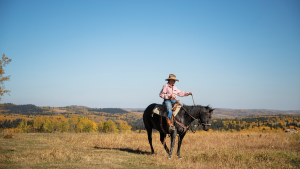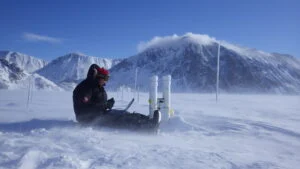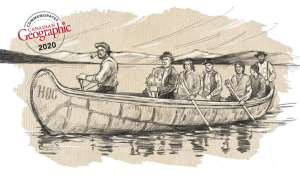At this, the STARS pilot acquiesced. He left Madden on the ground and told him he’d send for search-and-rescue on snowmobiles to bring out Klint. Madden waited for 45 minutes before trudging back up to his brother. “And good thing I did, boy,” Madden said. The fire was dying, and Klint was getting cold. Madden “gathered a whack of firewood” and restoked the fire.
The sound of snowmobiles signalled that help was near so he then walked back down the mountain to the search-and-rescue team and began guiding them back toward where his brother lay. The final ridge was too much for the snowmobiles and Madden and the rescue team was forced to make the final push to Klint on foot.
By then it was three in the morning. Madden had walked 16 kilometres since the crash and was both dehydrated and exhausted. Klint had been alone for two hours, growing weaker in front of a dying fire. Madden feared what he’d find over that last hill.
“I said to the search and rescue guys, ‘My brother could be dead. I don’t have enough strength to walk up and find his body. You have to do it for me.’”
Madden waited as the rescuers walked ahead. Then he heard one of them shout. “He’s alive and talking. Get up here.”
Klint would spend nearly a year recovering from his injuries and a bout of pneumonia his damaged lungs were vulnerable to. Then, last February, he contracted COVID-19.
“We just about lost him over COVID because of the punctured lung problems,” Madden said. But Klint recovered and is back flying helicopters. So is Madden, who has recently earned his pilot’s license.
As for the medal of bravery, Madden shrugs off the notion that he is some sort of hero. “I am living in this kind of a world full-time,” he said. “What I did that night was another day of work.”







